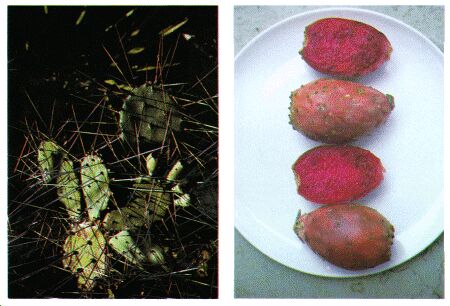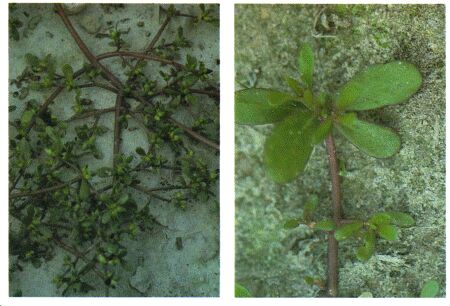 |
 |
 |
 |
| APPENDIX B |

Description: This cactus has flat, pad like stems that are green. Many round, furry dots that contain sharp-pointed hairs cover these stems.
Habitat and Distribution: This cactus is found in arid and semiarid regions and in dry, sandy areas of wetter regions throughout most of the United States and Central and South America. Some species are planted in arid and semiarid regions of other parts of the world.
Edible Parts: All parts of the plant are edible. Peel the fruits and eat them fresh or crush them to prepare a refreshing drink. Avoid the tiny, pointed hairs. Roast the seeds and grind them to a flour.
|
CAUTION
Avoid any prickly pear cactus like plant with milky sap. |
Other Uses: The pad is a good source of water. Peel it carefully to remove all sharp hairs before putting it in your mouth. You can also use the pads to promote healing. Split them and apply the pulp to wounds.

Description: This plant grows close to the ground. It is seldom more than a few centimeters tall. Its stems and leaves are fleshy and often tinged with red. It has paddle shaped leaves, 2.5 centimeter or less long, clustered at the tips of the stems. Its flowers are yellow or pink. Its seeds are tiny and black.
Habitat and Distribution: It grows in full sun in cultivated fields, field margins, and other weedy areas throughout the world.
Edible Parts: All parts are edible. Wash and boil the plants for a tasty vegetable or eat them raw. Use the seeds as a flour substitute or eat them raw.
| Updated: 12 January 2008 |
|
Born on 05 January 2000 |